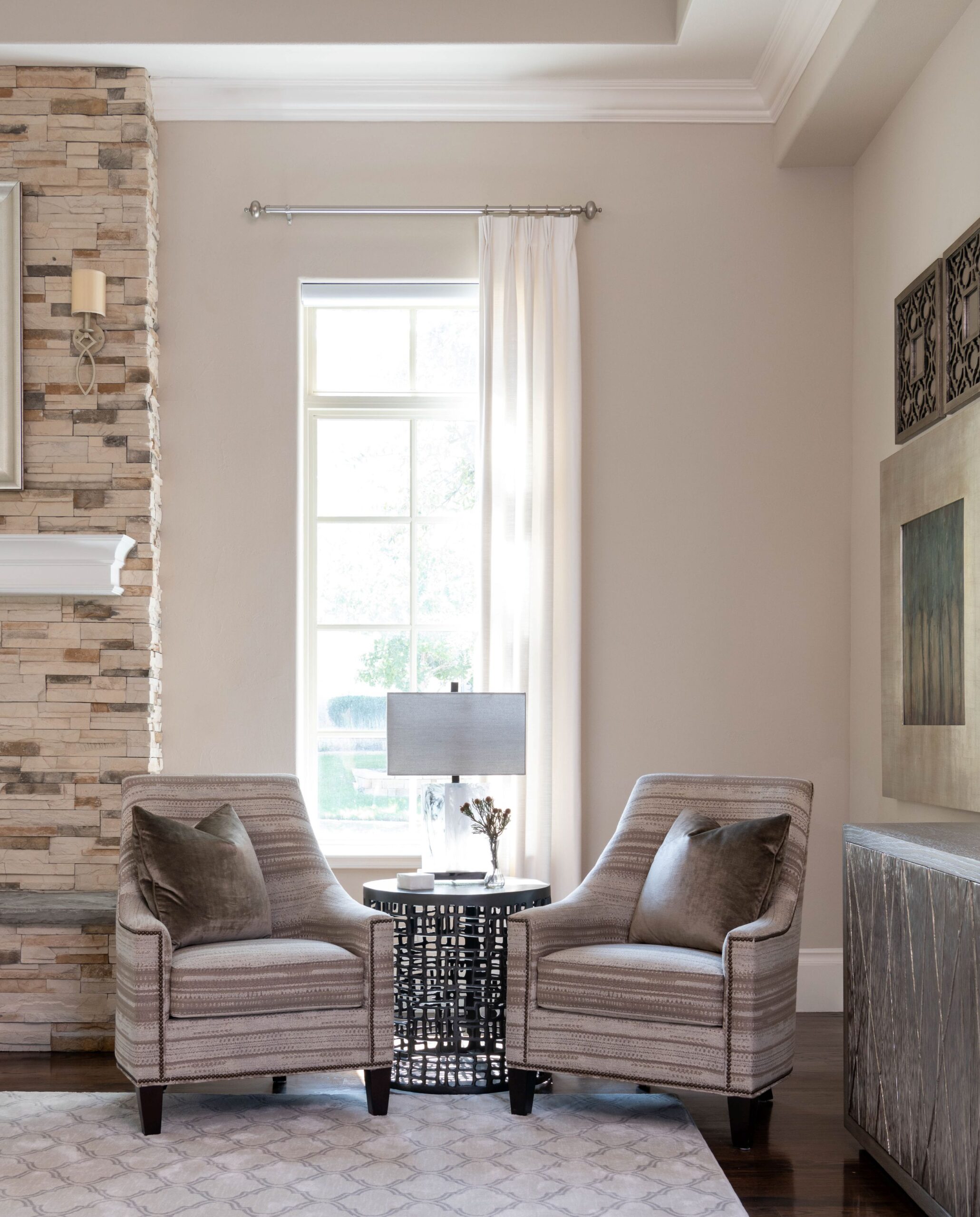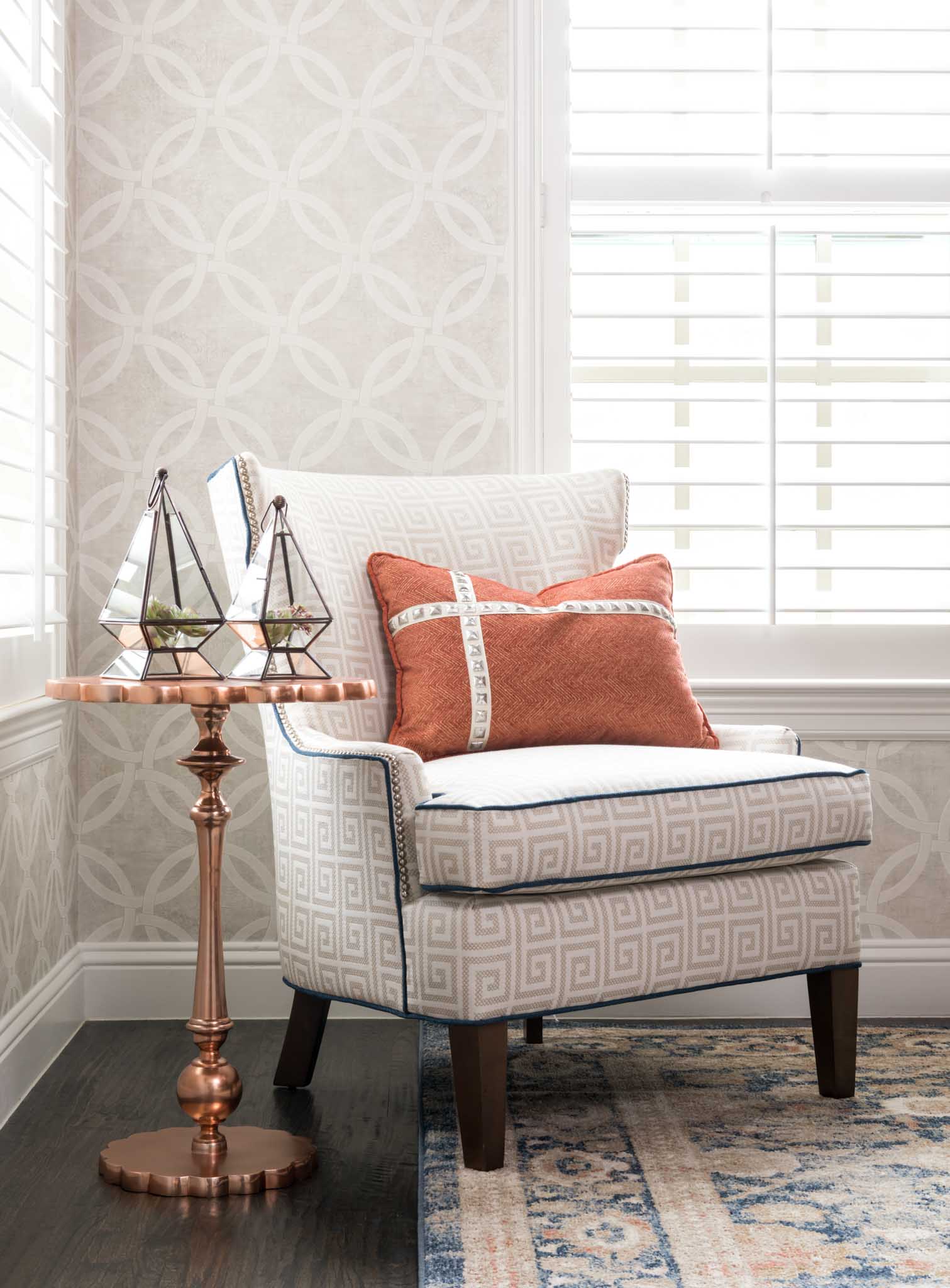The Allure of a Layering Neutrals Palette
A beautifully designed neutral room conveys elegance with subtlety. It embodies the art of restraint by using tone, texture, and proportion to create a calm atmosphere that feels sophisticated rather than flat. In luxury design, achieving this balance is crucial.
At Twilly & Fig, we see neutral interior design not as a lack of color, but as a study in harmony. It’s about creating spaces that feel soulful, not sterile; modern, yet sincerely inviting. Think of it as a quiet conversation between warm woods, textured textiles, and the gentle contrast of shadow and light.
Layering Neutrals doesn’t mean beige on beige. It means crafting depth through materiality — the weave of a linen sofa, the low sheen of a plaster wall, the touch of bronze on a lamp base, or the subtle marbling of a stone tray. Every texture tells a story.
Why Warmth Matters
Modern interiors often celebrate simplicity, but without warmth, simplicity can veer into austerity. That’s where tonal balance comes in.
In North Texas homes — where sunlight is abundant and architecture ranges from transitional to soft modern — we lean into materials that absorb and reflect light with subtlety. A layering neutrals palette allows that natural light to perform its quiet magic, shifting throughout the day and bringing life to the surfaces it touches.
Warmth, in design, is emotional. It’s what makes a space feel like it’s been lived in — even when it’s brand new. It’s the linen drape that moves with the afternoon breeze, the handmade pottery that’s slightly imperfect, the oak flooring that deepens in tone over time. When neutrals are done right, they’re timeless because they’re rooted in authenticity.
The Composition of Calm: Layering Neutrals
Start with Temperature
Before you start layering your decor, it’s important to identify the undertones of your foundation—whether they are warm, cool, or neutral. Warm tones can include creams, sandy shades, and honey oaks, which add a gentle warmth to the space. In contrast, soft grays, whitewashed woods, and limestone provide a cooler, more refreshing appearance. Often, the best results come from mixing these different elements. For example, you might pair a pale greige wall with warm caramel leather furniture, or combine a chalky oak floor with a gray-veined quartzite island.
This interplay of tone creates visual depth and prevents monotony. In a bedroom, for example, a flax linen headboard beside crisp ivory bedding and matte black sconces immediately adds tonal tension — the kind that feels both calm and alive.
Mix Textures, Not Colors
When working with a restrained palette, texture is your best friend. Rough with smooth, matte with gloss, woven with polished — this is where the soul enters the room.
A cozy living room might combine a nubby boucle chair, silk velvet pillows, and a natural oak coffee table. The hues are nearly identical, yet the tactile contrast keeps the eye moving.
In our own Twilly & Fig projects, we often anchor a space with a modern organic rug — soft underfoot but visually grounded — then layer ceramics, textiles, and soft metals that shift under changing light. It’s this interplay of texture that transforms “neutral” into “nuanced.”
Let Shadow Define Shape
A common mistake in neutral interiors is too much sameness. Without tonal contrast, form disappears. That’s why we play with light and shadow deliberately — through architectural depth, curved furnishings, and strategic lighting.
We often specify lighting between 2700K and 3000K, where warm illumination enhances the material’s natural undertones. A plaster wall comes alive. A woven pendant casts a soft pattern across the ceiling. Warm light restores humanity to the minimalist palette.
Add the Accent of Imperfection
True serenity comes from balance — not perfection. In a neutral environment, imperfection adds life. A ceramic vase with a hand-pulled rim. A vintage wood stool with softened edges. These are the punctuation marks that make a space feel loved and lived-in.
Luxury is no longer about symmetry; it’s about soul.
 Design Insight
Design Insight
“A quiet room has its own rhythm,” says Danielle Frazier of Twilly & Fig. “When we design in neutrals, we’re not creating blankness — we’re composing depth. Every finish has a temperature. Every texture has a tone. The beauty lives in how they speak to one another.”
Livability Takeaway
A Layering Neutrals design succeeds when it evokes both calm and character. Layering materials, managing tone, and embracing imperfection ensure a home feels serene — but never static. The secret isn’t in the color palette; it’s in the craftsmanship of contrast.



 Design Insight
Design Insight



















